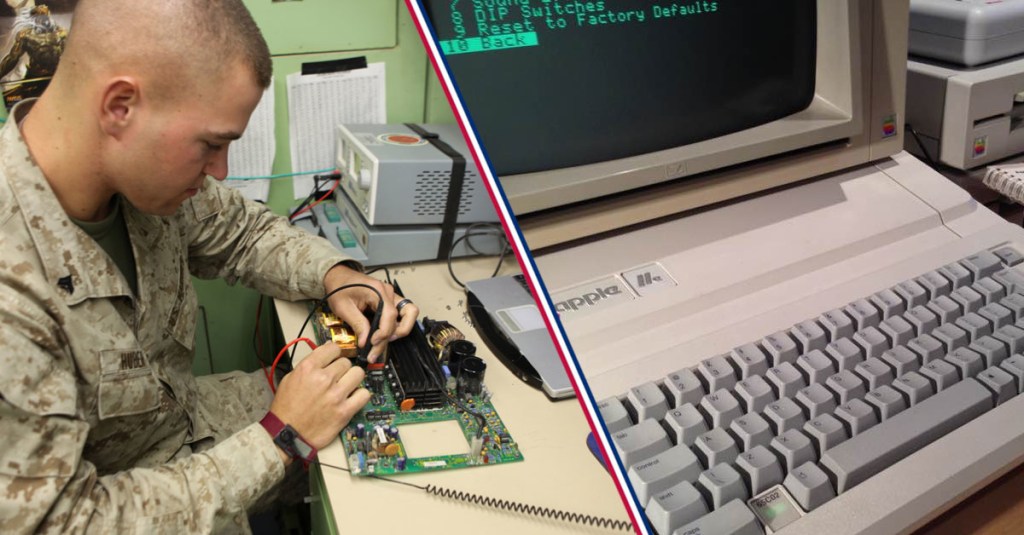Dealing with computer problems and other technical failures is just one of the many joys of being in communications. Being trained to work with computers and radios often means that the commo guy becomes the go-to person for any and all computer-related problems, even outside of work.
Of all the problems that a commo guy will deal with, most stem from the continual pain-in-the-ass that is time. There are many ways to reduce the strain put on consumer goods, but Father Time remains undefeated. Eventually, there will be a point in the lifetime of any device where they become obsolete — and we’re not saying that something’s useless compared to the “newer, bigger, better” models out there — things just degrade. It happens.

Some companies (we’re not naming names) are known for their products losing juice over time. That’s how they sell yearly releases of the same product.
(Photo by Marco Verch)
Now, to avoid losing people to technical jargon, we’re going to break things down to their simplest forms — Barney style — when explaining technology. Just know that there’s almost always (read: almost) a valid, technical reason for a product aging into degradation.
The biggest tech aspect affected by Father Time is power supply. Back in the day, larger power supplies and batteries could seemingly last an eternity (by today’s standards). The Nokia 3310, for example, could run for weeks on a single charge, so you’d expect technology would just improve on that, right?
Well, no. Consumer demand drove companies to adopt faster and slimmer batteries to power phones that have more capabilities than ever. While most companies do try to include the most powerful available battery in a product, lithium-ion batteries have an average life cycle of 1200 full charges. Once they’ve been depleted and charged up around 400 times, the maximum charge is roughly 80% of the original capacity. From there, it gets exponentially worse if you allow your batteries to drain to 0% on a constant basis.

One of the many benefits of owning a desktop over a laptop computer.
(U.S. Air Force photo by Airman Caleb Vance)
Another aspect is performance. To sum it up broadly, this is what’s really happening when a not-so-tech-savvy person says their computer is “running slower.” Think of your computer as a pack mule: The more you use it (like installing programs, downloading files, visiting websites), the more stress you put on it.
Your once-beautiful darling that could once stream videos at lightning speeds now has all of that baggage weighing it down. This is also broken down into two different categories of problem: either you don’t have enough RAM (Random Access Memory) to juggle all the tasks you’re giving it (active or passively) or you don’t have enough hard-drive space for all the crap you’re asking it to carry.
Thankfully, both of those have really easy-to-solve solutions: upgrading parts. If your computer can be cracked open, it’s far cheaper to slap in a new stick of RAM than it is to buy an entirely new computer. Adding new hard-drives is even easier.

All that tech and some people still just use it for the games.
(U.S. Air Force photo by Senior Airman Nicole Sikorski)
But it’s not always a result of overuse. If you were to take a fresh computer that has been sealed since 1999 out of the box — never downloaded anything, battery has never been drained, or hooked up to the internet — it still wouldn’t perform to today’s standards.
In 1999, the tech world was blown away by the IBM Microdrive when it was announced that it came with a whopping 340 MB of storage. This was around the same time it took the entire night of downloading just to watch a two-minute trailer of Star Wars: Episode I using dial-up internet.
It should go without saying that technology has become exponentially better over time. Now, you can just pick up that 512GB microSD card (that’s about the size of a toenail) and watch the entire Star Wars series from your smartphone from almost anywhere in the world, streaming video in real-time. What was groundbreaking then isn’t even comparable to just a few years later — your device isn’t just getting worse slowly, everything else is also getting better.

You don’t need to buy something that will last forever. Just for a while.
Sure, it sounds grim, but you can still do many different things to maximize your computer and phone’s lifespan. If you care for your technology and aren’t constantly using it, it’ll see a few more years of use. But there will be a point where your tech just isn’t good enough to get by.
When you’re planning your next tech purchase, keep lifespan in mind. The cheaper option may end up costing you more money over time. Why buy a 0 “meh, it’ll do” laptop and watch it careen into obsolescence in 12 months when a 00 beast of a desktop could last you several years?
So, if your computer or cell phone that’s been doing its duty just fine for the last six years starts hobbling on its last legs, don’t be shocked when your computer friend tells you it’s time to put it out to pasture.
It happens — don’t shoot the messenger.


















